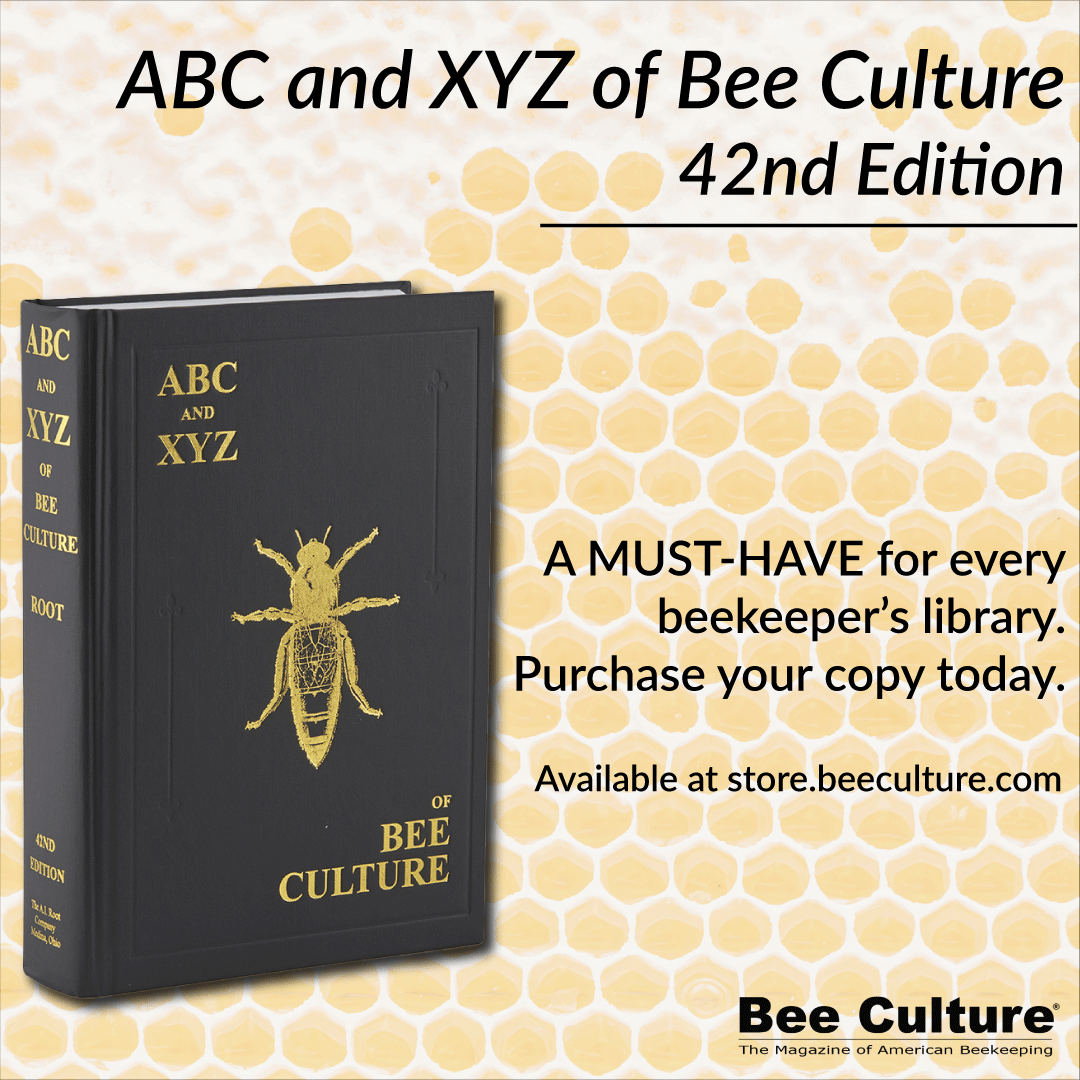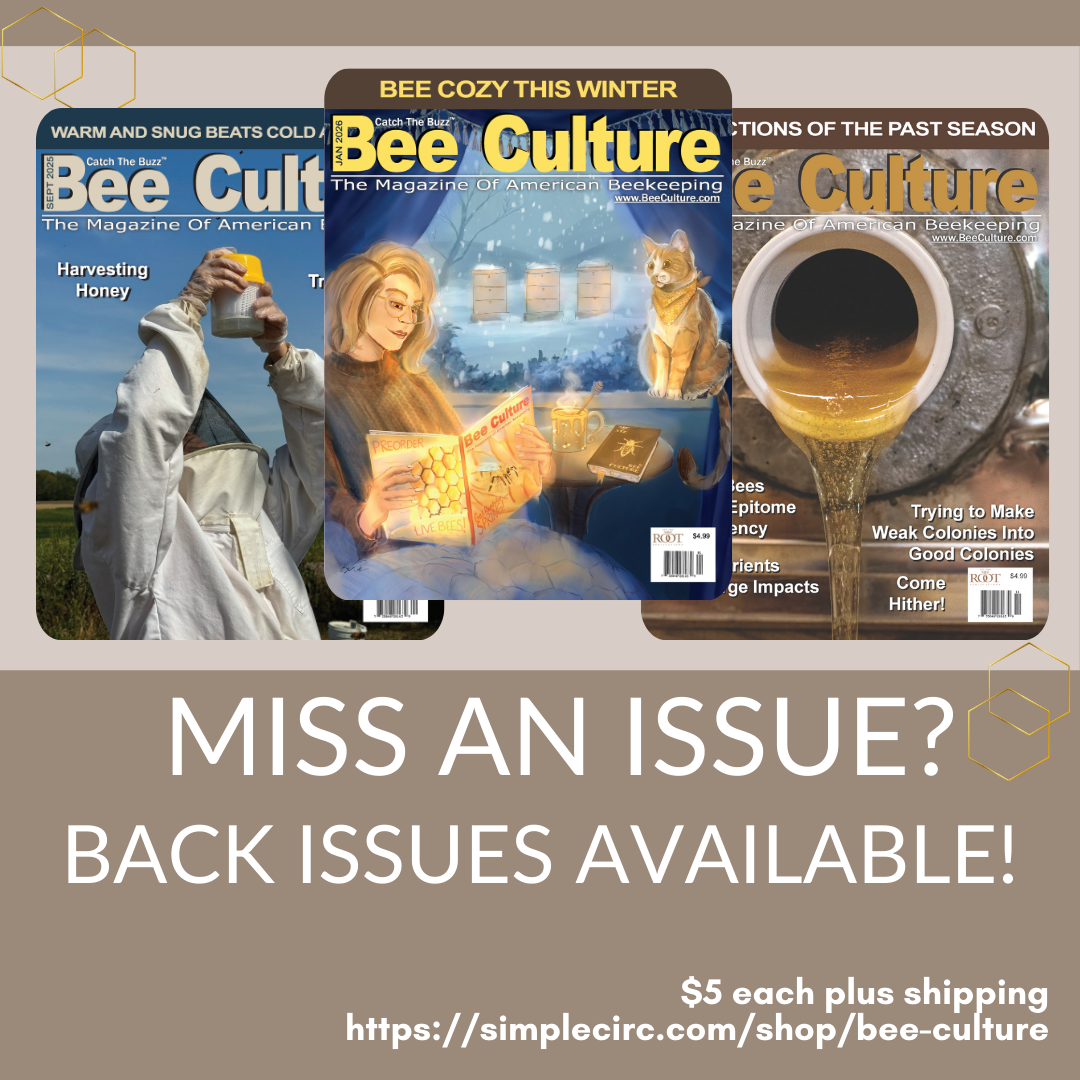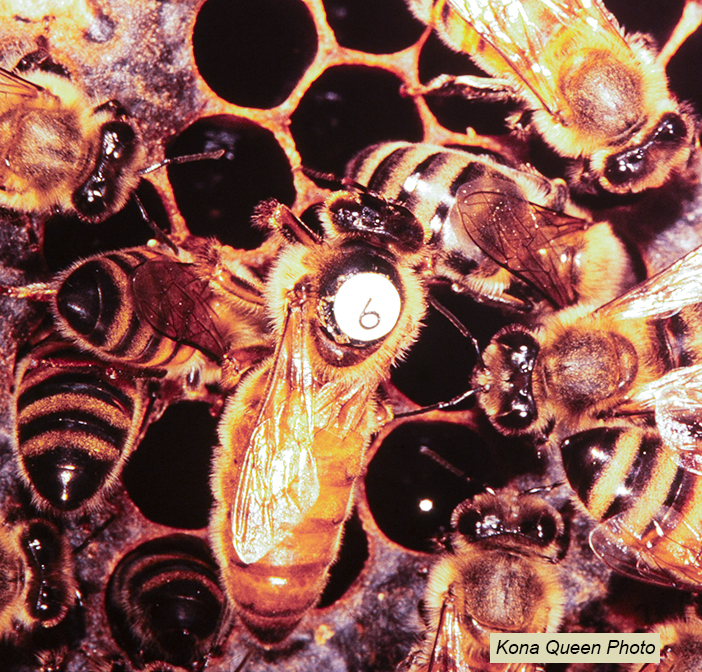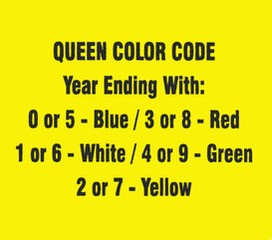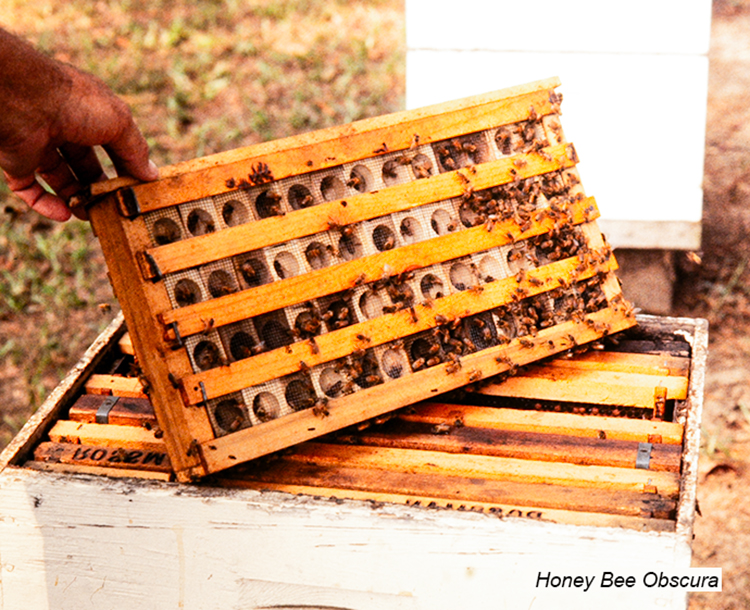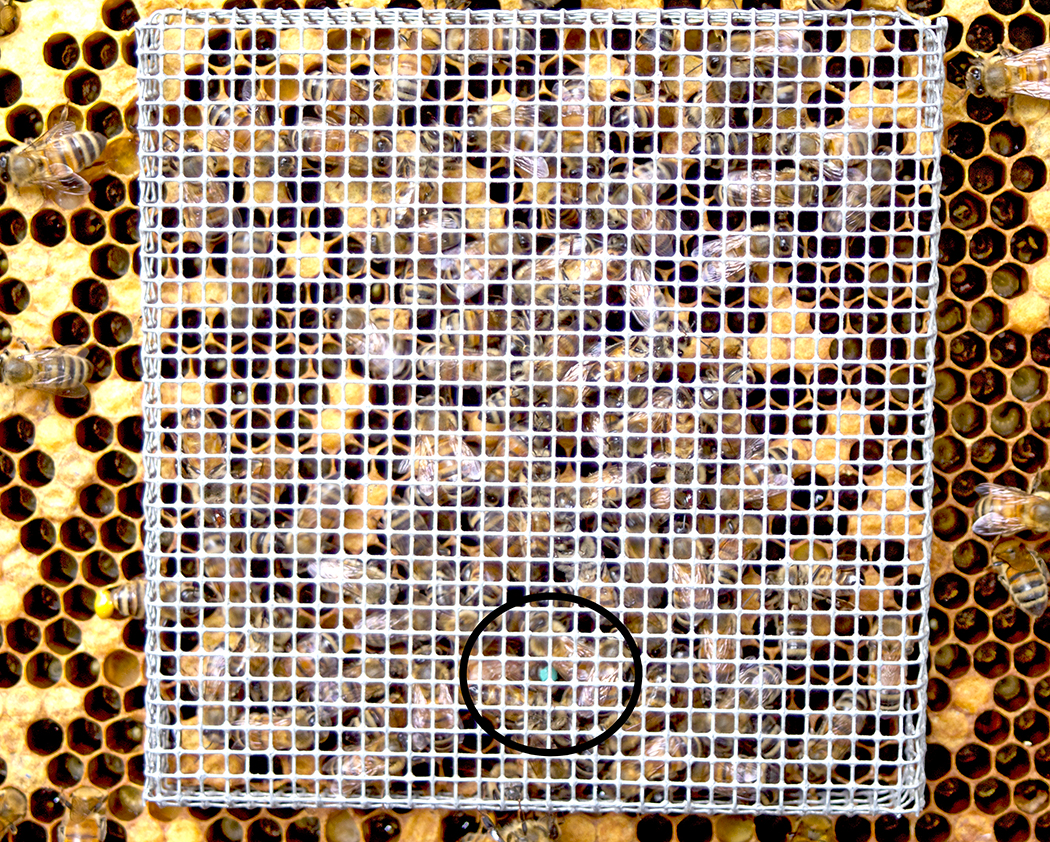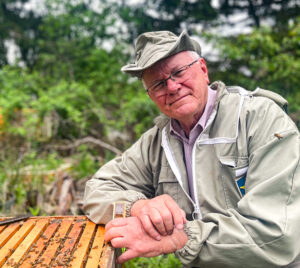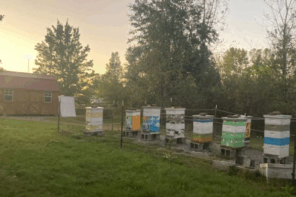Click Here if you listened. We’d love to know what you think. There is even a spot for feedback!
Read along below!
Managing And Manipulating Honey Bee Queens
An Integral Aspect of Keeping Bees
By: James E. Tew
Getting comfortable handling queens
Like so many other aspects of beekeeping, confidence and comfort when catching and handling queens only comes after you have caught and handled queens over time. The chances are good that even a novice will not actually crush a queen simply trying to catch her. What about stings? Queens can sting and, yes, the sting feels like a good, meaningful sting, but – in my modest experience – it rarely happens. Depending on the age of a queen and her demeanor, a greater concern than stinging is her taking flight and becoming lost. Even if you don’t take on the task of producing queens, in your beekeeping endeavor – sooner or later – there will be common occasions when handing a queen becomes necessary. Handing and manipulating queens is not really that difficult but it demands a soft touch.
Finding queens
Finding the queen in a colony can be a problem. (I am immediately inclined to sarcasm.) If you really want to find the queen, then just don’t look for her, but rather just look for anything else. Time and again, it feels as though I see the queen when I am not searching for her but then I generally see her when I have no reason to catch her. Yet, if I need her, and am diligently searching for her, it is as though she is not even in the same county. What gives?
I recently read an article1 on old subconscious brain functions that was only one of several that I have read on the subject. Essentially, the concept is that my unconscious brain function is more significant than my conscious awareness (in many ways). It seems that the unconscious part of my brain has been given a hefty assignment – coordinating my breathing, heart beating, bile production, hair growth, digestion, skin replacement…and on it goes, but finding a honey bee queen? Oh, yes, at this point, I admit that I am making a broad jump from the tenets of the article to any effort directed toward finding a queen.
My belabored point is, “when searching for the queen, calm down and let your subconscious mind help”. Don’t be racing the other person who is also looking. Don’t be anxious because you have already been through all frames one time already. If practical, separate, and isolate the individual hive components of the colony. If you begin at the top of the hive, there is a chance the queen will move away from all the commotion as you remove frames. She will steadily move down – requiring you to go through even more equipment. Don’t set individual components on the grass. Use extra bottom boards or outer covers. Don’t begin with the centermost frame. There’s too much of a chance that you will roll the queen off as you remove the first, tight frame. Once an outside frame has been removed, remove additional frames as you just calmly look for her – over and over again. Didn’t see her? Then check the sides and the little clusters of bees in the bottom board corners. She’s there somewhere. Don’t get anxious. She always turns up.
Catching and handling queens
There are quite a few reasons a beekeeper may have to catch a queen but I will use the common need to remove the queen from a nucleus colony as the reason for catching and handling a queen.
As is so often the case, new queen handlers can practice on drones. They are larger, more sluggish and they don’t sting. See if you can grab the big fellow by both wings (probably with your right hand), then grasp the drone with your thumb and forefinger of your left hand. You will then be holding the drone by his thorax. He’s going to be going crazy as he buzzes and struggles. Once you feel comfortable with this practice procedure, try it on your queen.
Choose your spot when she is in the open on the comb and not surrounded by workers or near edges. Be decisive. Give it a shot. If you miss, back off and wait for another opportunity. Don’t keep jabbing and don’t press the queen onto the combs to catch her. Her head and thorax are pretty tough but her abdomen is soft and easy to damage.
Be prepared. She will be squiggly and struggling to escape. A stray leg or wing may be twisted in an awkward position. Do whatever it takes to make the situation correct. If you are new to this, you will be worrying about being stung and fearful of hurting her. Ultimately, you will become confident, but even experienced handlers should not become cocky. Experienced queen handlers are respectful and always careful when handling a valued queen.
Clipping and marking queens
Clipping a wing
Marking queens with a colored dot of paint or an adhesive dot is a common practice while the procedure of clipping queens has – for the present time – faded as a queen management recommendation. Who knows? As urban beekeepers continue to bring bee hives to town, the practice could, if needed, be revived. Essentially, the practice was to clip off the end of one of the queen’s larger wings; only the tip – maybe 1/8” or so. Clip too much as the queen could be viewed as damaged by the nurse bees. Don’t clip enough and she will still be able to fly. Practitioners of this procedure also recommend clipping a right wing in even years and the left wing in odd years.
The purpose of clipping was to keep the swarming queen from flying too far or too high, making the swarm easier to retrieve. If this procedure is revived, I and others like me will readily write about it, but just now, it should be enough to say that, yes, it does help keep the swarming queen nearer the ground, but on occasion, the swarming bees will not find the queen on the ground and she cannot return to the colony. It is not uncommon for the mutilated queen to be superseded. Clipping a queen makes her a very poor flyer – if she can fly at all. I have never liked the procedure but I don’t like my swarming bees landing on my neighbor’s property either. Even so, I have not clipped a queen’s wing in many, many years.
Marking a queen
No doubt, worker bees do not care for the paint odor of a freshly marked queen but marking seems to be less obtrusive than clipping. Marking a queen is a very helpful queen management procedure. A mark can give the general age of the queen and reassures the beekeeper that the original queen is still on the job. Gadgets are available from bee supply companies for holding the queen while marking.
Marking pens or model car enamel can be used to make the mark. Some beekeepers have used products like colored Liquid Paper®. Adhesive colored, numbered plastic dots have also been available for many years. Many years ago, a color code that indicates the year the queen was installed was developed. The color code for marking queens is recommended but a mark of any color is more helpful than no mark at all.
Use only a small mark. Allow the mark to thoroughly dry before returning the queen to the colony and don’t get paint on anything but the queen’s thorax. As usual, practice on drones.
Queen banks
A queen bank is a specialized frame or hive body where extra caged queens are stored until needed. There are no standard styles of banks. Placing queens in a queen bank is a common practice later in the queen-producing season. Queen producers cannot produce enough queens in the early Spring when demand is high but later the demand drops off and harvested queens must be stored somewhere so mating nucleus hives can be utilized to their full potential.
A queen bank is a colony of bees (either queen-less or queen-right) in which mated queens are placed for a period – usually until they are sold. In the queenless queen bank the queens can be stored almost anywhere in the hive. The queen cages are placed in special frames designed to hold the style of cage the breeder is using. The bees in the hive will feed the queens and keep them alive. A queen-right hive used as a queen bank requires some separation between the brood chamber which holds the queen and the area of the hive where the mated queens are kept. A queen excluder is usually placed over the brood chamber followed by a honey super and then the super that will hold the queen frames. With a queen-right colony this works well until cold weather sets in when the bees will return to the brood chamber and abandon the banked queens. This happens often when beekeepers buy a hundred queens or so and place them directly above the queen excluder until they can get them into hives for splits or requeening. An undetermined number of these stored queens may die probably because worker bees – for whatever reason – leave them unattended.
What is good about a queen bank?
It allows the beekeeper to utilize nucleus (aka nuc hive) hives when demand for queens is low or to hold a large inventory of queens after the season has ended. However, even a few queens can be banked with success.
What is bad about a queen bank?
Queens placed in a queen bank are not laying eggs and generally lose weight because of not being a productive egg layer. This must cause stress on the queens. It is unnatural for a queen to exist in this condition during the Summer months. Is this one of the reasons for some of supersedure in modern queens? Ideally, queens would not be held in confinement any longer than necessary. Normally, this short, stressful period is the few days it takes from being taken from the mating nuc until they are introduced to a hive as the new queen mother. But having written all of that, sometimes it necessary to cage a queen for a longer time. Everything depends on management details.
Queen cages
The most common queen cage is still the Benton 3-hole cage, but I should rush to say that a host of plastic cages are available and many have desirable attributes. A queen cage can be an old-style match box or an empty drink cup, but for longer term storage, proper cages are required. For a comprehensive review of the multitude of queen cage styles, see: http://www.dave-cushman.net/bee/queencages.html. Currently, when it comes to queen cages, you get to decide which design you like best.
Introducing queen bees into colonies
There are incredible numbers of ways to introduce queens and absolutely none are foolproof. Two common techniques, having different levels of complexity, follow. In both instances, the old queen much be removed. Do with her as you wish, but she can’t stay in the colony.
A homemade cage that I have used
If I have a queen that is particularly valuable to me, I use a fairly clumsy technique. Using 8-mesh hardware cloth, I improvise a cage that is 4-6” square and about ¾” deep.
I remove a frame of capped brood and shake off 90% of the bees (the remaining bees will be young nurse bees). Working under screen netting or working at a screened window, I trap the queen underneath the cage with a few young worker bees by pressing the cage into the comb over the capped brood. The young worker bees in the cage are optional. Yes, some pupae will be killed. I remove an outside frame to give me plenty of room in the center of the colony and I return the caged queen into the colony proper. I check the cage in about 2-3 days to see if outside bees are still acting aggressive toward the cage and determine how many young nurse bees have emerged with the queen inside the cage. At 4-5 days (6-7 days is not bad), I open the colony with least amount of smoke and gently remove the cage. Using the netting is an excellent idea if this is a particularly expensive queen. I will then do nothing for a week other than checking at the entrance to see if the queen has been ejected. After a week, I will check to see if eggs are present. If they are, leave the colony alone for 4-5 more days before beginning to treat the colony normally.
I should add that sometimes, outside workers will tunnel beneath the wire cage walls and release the queen prematurely. Press the cage as deeply as possible without crushing the cages bees.
A less complicated technique that I frequently use
With a queen that is less valuable to me and working under netting or working near a screened window, I put the queen back into a common 3-hole queen cage. No feed is required. I suspend the queen near capped brood and nurse bees. Follow the same timeframe as above, but don’t leave the cage in any longer than necessary. If no candy plug is present, the queen will have to be released manually. Bees will build burr comb in the extra space caused by the removed frame. In all cases, bees will treat the cage as they will treat the queen given the chance. If they are clinging to the cage, do not release her. Give the caged queen more time to be accepted. If the worker bees are calm and quiet, releasing her should be okay.
General suggestions for queen introduction with a traditional cage
- Be absolutely certain the colony is queenless and that any developing queen cells have been destroyed.
- Allow the colony to stay queenless for a day or so but not much more than three days.
- If possible, allow the queen to be caged within the colony for about two – four days.
- To release the queen, place the cage between the frames with the screen side down and with the candy plug exposed near the vicinity of young bees and brood.
a. Allow the bees approximately two days to release the queen.
b. Remove the cage as soon as possible to prevent burr comb from being produced in the space around the queen’s cage. - If the queen is to be manually released, watch the surrounding bees to determine if they are clinging tightly to the cage in which the queen is confined.
a. If they are showing aggressive behavior, do not release the queen until the surrounding workers act passively toward the caged queen.
b. After releasing the new queen manually, watch the surrounding workers to see if they react hostilely to the new queen as she explores the comb on which she was released.
c. If possible, don’t open the hive again until the queen has had time to develop a brood nest of her own (about 5-6 days).
You are never totally comfortable
I doubt that any beekeeper is ever 100% comfortable handling queens. Unless the queen is being replaced, care and gentleness must always be used when handling new queens. There is no way to really practice this management necessity other than to just do it. If you make a mistake, it becomes one of your lifelong beekeeper stories.
Thank you
Thank you for reading to this point. I always appreciate the time you use to read this piece.
Dr. James E. Tew
Emeritus Faculty, Entomology
The Ohio State University
tewbee2@gmail.com
Host, Honey Bee
Obscura Podcast
www.honeybeeobscura.com
1 Eagleman, David. (2011, September 8). Your Brain Knows a Lot More Than You Realize. Discover Magazine, https://discovermagazine.com/2011/sep/18-your-brain-knows-lot-more-than-you-realize/?searchterm=subconscious


